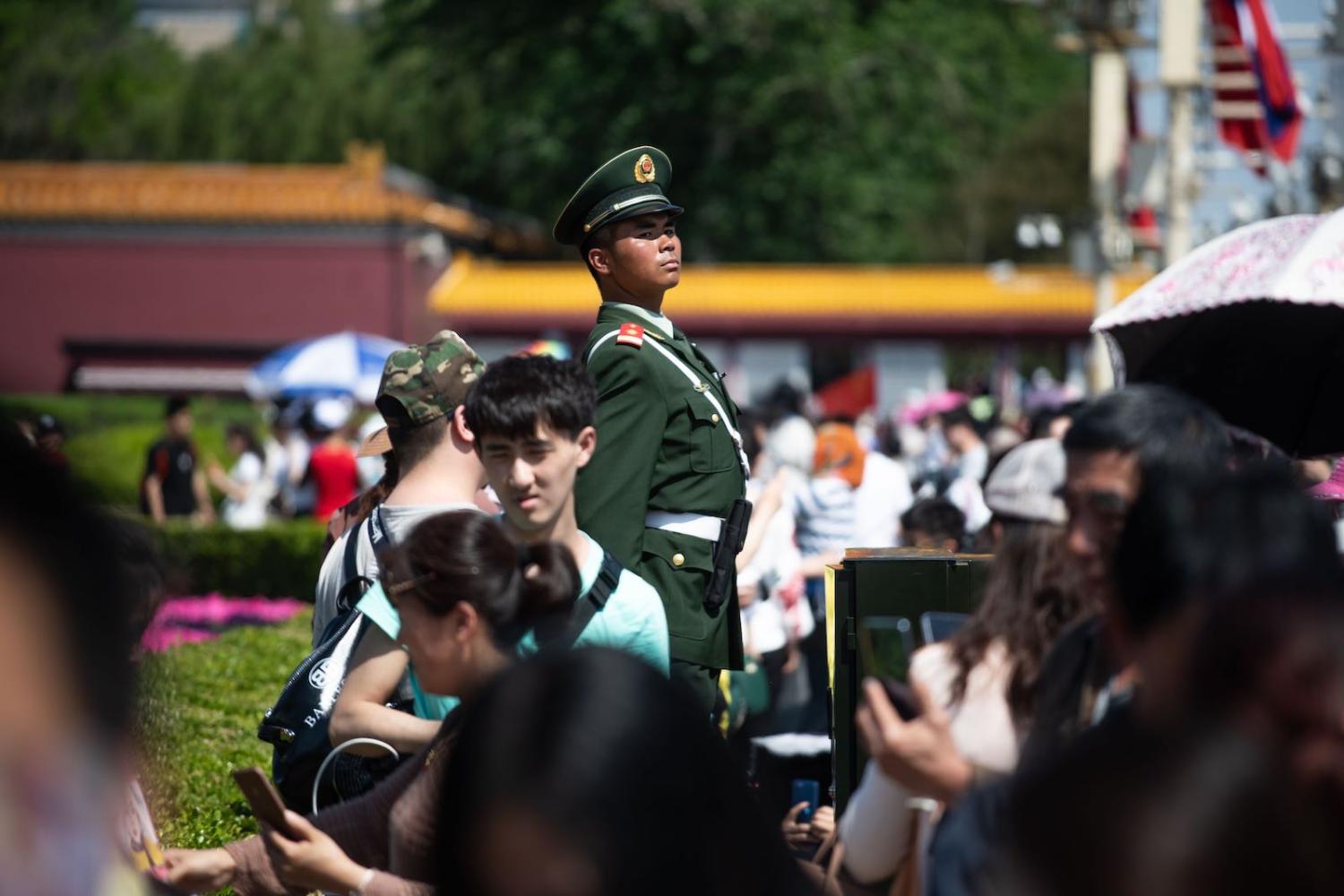Much has been written in recent years about the reorientation of US policy to the Indo-Pacific region in response to China’s expanding economic and strategic footprint. What is less clear, however, is how the region itself is responding to the new era of strategic competition proclaimed by Washington in its new National Security Strategy of December 2017.
What is less clear is how the region itself is responding to the new era of strategic competition proclaimed by Washington.
While the score card across the wider region is mixed, the bottom line is this: the deep gravitational pull of China’s economy is having a long-term impact on the strategic behaviour across the Indo-Pacific, despite Washington’s shift in posture.
On the Korean peninsula, China is now in a stronger position than it was with both the Koreas only a year or so ago. The tumultuous year following President Donald Trump’s decision to directly engage Kim Jong-un has also had a profound effect on China-North Korea relations. Trump’s North Korean diplomacy thawed Beijing-Pyongyang relations which had been in a deep freeze for over five years. China is unlikely to compromise its long-term strategic relationship with the North by forcing the North to denuclearise. That’s because abiding Chinese strategic doctrine is predicated on maintaining a benign strategic buffer between China and South Korea, and Japanese and American forces based there.
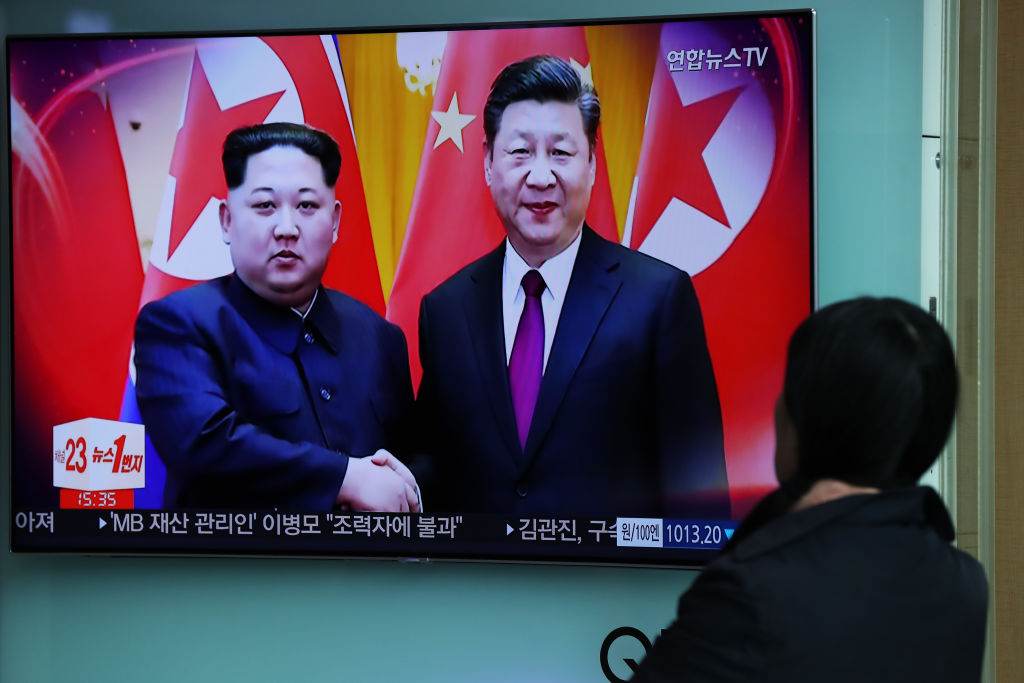
As for the South, the danger of Trump’s North Korea policy is that it has created political expectations for an accommodation with the North, even if the North refuses to denuclearise. While refusal to denuclearise is anathema to US policy, that is not necessarily the case in Seoul under the current centre-left government. Given that the North is highly unlikely to denuclearise, it’s possible to see a scenario where the South begins to drift away from America’s strategic orbit as Seoul looks for its own accommodation with the North, assisted by China.
China does not want to see a united Korea on its doorstep, let alone one which is firmly within America’s embrace.
China does not want to see a united Korea on its doorstep, let alone one which is firmly within America’s embrace. China seeks to bring about benign relations with both North and South as both become progressively more dependent on the Chinese economy and as the South is steadily coaxed away from the United States. This should not come as a surprise given China’s long declared strategy to see an end to all US alliances in Asia.
As for Japan, Prime Minister Shinzo Abe continues to defy the history books on the political durability of his administration. At one level Japan remains one of the strongest continuing pillars of American allied interests in Asia. Japanese foreign and defence policy has also become more activist and assertive under Abe’s leadership. Japan led the rehabilitation of the TPP following the Trump Administration’s decision to leave an ambitious regional free trade agreement that excludes China. Abe also successfully reinterpreted Article 9 of Japan’s post-war pacifist constitution to enable the Japanese SDF to operate in more expansive military exercises and operations – both independently, and with the US and other allies.
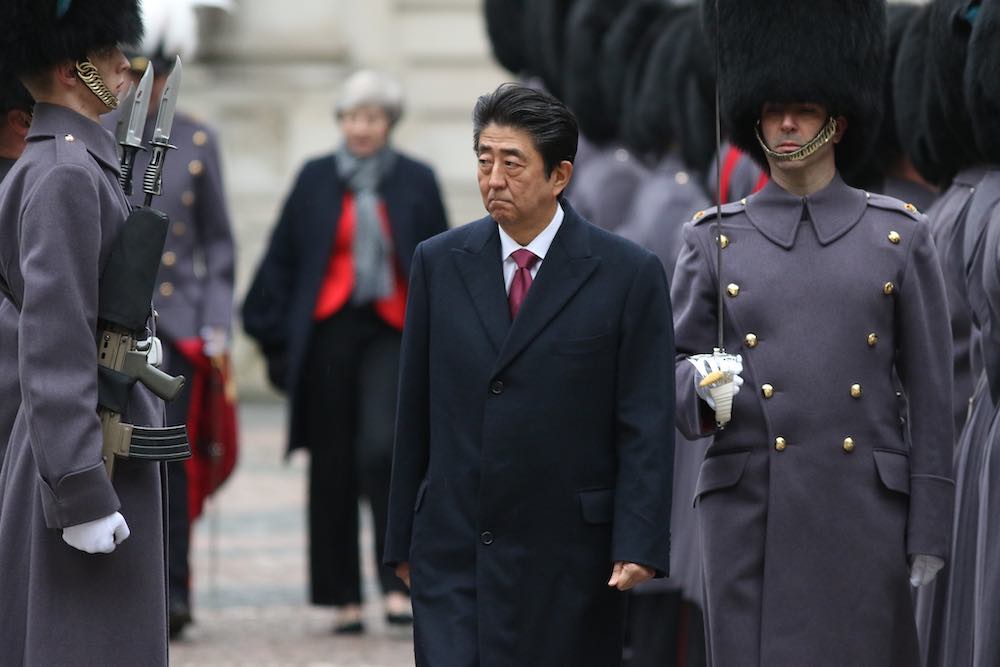
Nonetheless, it would be naive to conclude that Japan has placed all its eggs in a single strategic basket. Abe’s visit to Beijing in October 2018 broke a seven year effective freeze in the Japan-China relationship, indicating Tokyo’s intent to begin hedging its future strategic bets. Chinese military activity around the disputed islands has significantly declined, as have Japanese SDF deployments in response. Abe has also opened the door to future Japanese collaboration on Belt and Road Initiative projects.
Southeast Asia has now become the new “great game” in the strategic competition between China, the US and its allies. China’s overwhelming economic presence in these smaller economies has created a series of political and foreign policy opportunities for China from the Philippines, to Brunei to Myanmar. China has also succeeded in quarantining the management of its territorial claims and land reclamation efforts in the South China Sea to a regional diplomatic process.
There is also a growing political perception across the Association of Southeast Asian Nations that Trump does not recognise the strategic importance of the region, irrespective of what other branches of the administration may be doing, particularly through the Pentagon, the State Department, and Indo-Pacific Command.
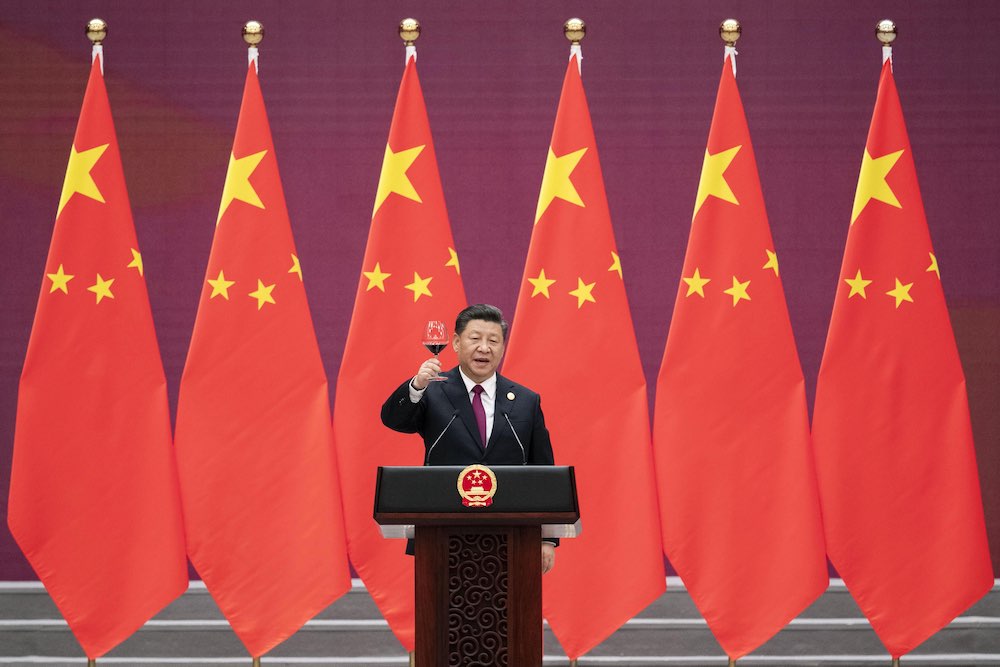
That does not mean that the region has become plain sailing for China. The election of Malaysian Prime Minister Mahathir last year in a campaign warning against the dangers of his country and others falling into a long-term Chinese debt trap sent ripples across the region. There are also significant infrastructure projects, including sensitive port infrastructure in Indonesia that have been awarded by Jakarta to Indian and Japanese bids over the Chinese.
Nonetheless, the United States must recognise the sheer weight of China’s economic footprint. Absent an effective American alternative, it favours Beijing over the medium to long term.
In India, Prime Minister Narendra Modi’s Hindu nationalist Bharatiya Janata Party has over five years moved the country towards a closer strategic relationship with the United States than any of his predecessors.
The strengthening of the US-India relationship has been driven by a rising China, peppered with repeated major incidents along the disputed Sino-Indian border, a longstanding toxic relationship with Pakistan (long supported by China), as well as the construction of Chinese naval and civilian port facilities across the Indian Ocean – from Bangladesh to Sri Lanka to Pakistan, through to Tanzania, Sudan and Djibouti.
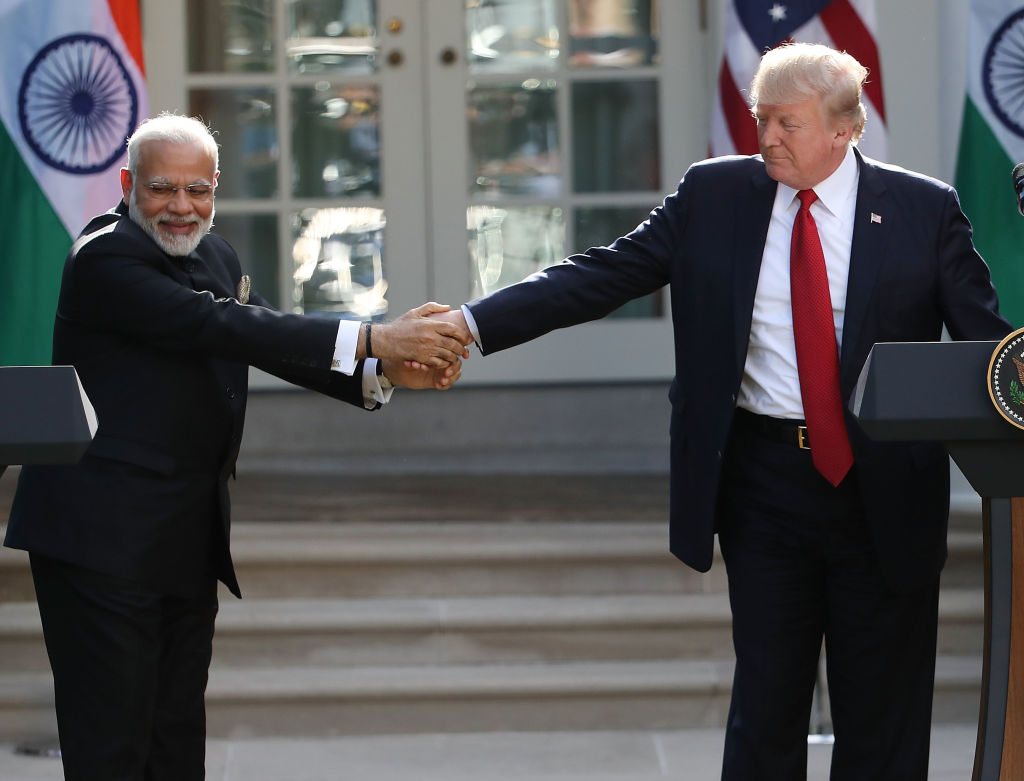
India is nonetheless dissatisfied with its economic relationship with the US, given the Trump administration’s decision to strip India of its previous preferential tariff status in selling Indian goods into the American market. Furthermore, India’s determination to continue sourcing various defence purchases from Russia creates further obstacles in the overall strategic relationship with the US, particularly as these can trigger automatic sanctions under US legislation.
Finally, it’s important to note that as with Japan’s Abe, Modi has also sought to hedge his strategy with the US and China through his own far-reaching bilateral summit with Xi Jinping in Wuhan in April 2018. The two have met on four occasions since, publicly reporting their improved relationship.
This brings us finally to the Gulf. China’s core interest in the Gulf is to secure its long term oil and gas supplies. China would like Saudi Arabia to participate in BRI projects, perhaps even turning Saudi Arabia into the BRI gateway to Africa. Mohammed bin Salman’s visit to China in February 2019 was an important turning point in the relationship, given Saudi Arabia’s increased international isolation following the assassination of Washington Post journalist Jamal Khashoggi.
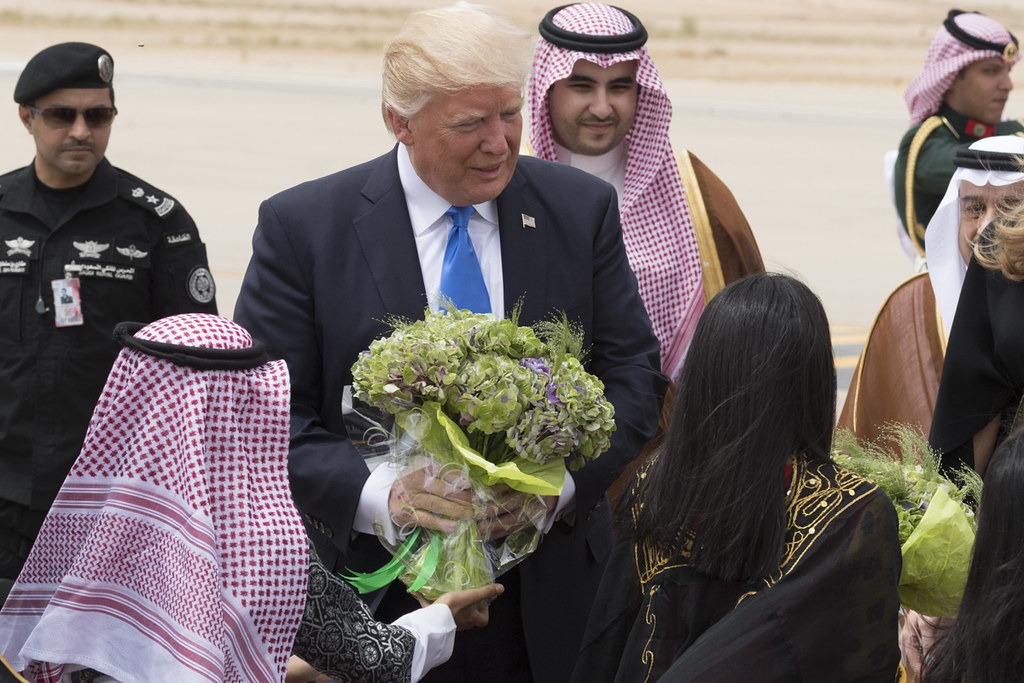
Once again, however, both Saudi and the UAE remain deeply sceptical about Beijing’s much older and closer relationship with Iran, the country which they have long identified as their fundamental strategic threat in the Gulf. This scepticism is compounded by China’s close strategic relationship with Russia, which has opposed Saudi interests in the resolution of the Syrian conflict. And to this should be added growing concerns in the Muslim world over Chinese policies towards their own Muslim minority in Xinjiang.
Nonetheless, the Gulf for the first time is now in play for China in a way which would have been unimaginable only a decade ago.
The missing element in US grand strategy in the Indo-Pacific region is the economic arm. Whatever the new US national security strategy may produce in new military capabilities and doctrine across the region, for the long-term US national interest, the Trump administration’s decision to withdraw from the Trans Pacific Partnership is proving to be a strategic error of catastrophic proportions.
This piece is adapted from a recent speech delivered to the 55th West Point Senior Conference, at the United States Military Academy, West Point, New York.
